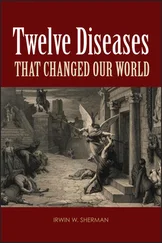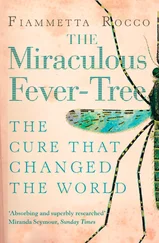Francis Anstie - Neuralgia and the Diseases that Resemble it
Здесь есть возможность читать онлайн «Francis Anstie - Neuralgia and the Diseases that Resemble it» — ознакомительный отрывок электронной книги совершенно бесплатно, а после прочтения отрывка купить полную версию. В некоторых случаях можно слушать аудио, скачать через торрент в формате fb2 и присутствует краткое содержание. Жанр: foreign_antique, foreign_prose, на английском языке. Описание произведения, (предисловие) а так же отзывы посетителей доступны на портале библиотеки ЛибКат.
- Название:Neuralgia and the Diseases that Resemble it
- Автор:
- Жанр:
- Год:неизвестен
- ISBN:нет данных
- Рейтинг книги:5 / 5. Голосов: 1
-
Избранное:Добавить в избранное
- Отзывы:
-
Ваша оценка:
- 100
- 1
- 2
- 3
- 4
- 5
Neuralgia and the Diseases that Resemble it: краткое содержание, описание и аннотация
Предлагаем к чтению аннотацию, описание, краткое содержание или предисловие (зависит от того, что написал сам автор книги «Neuralgia and the Diseases that Resemble it»). Если вы не нашли необходимую информацию о книге — напишите в комментариях, мы постараемся отыскать её.
Neuralgia and the Diseases that Resemble it — читать онлайн ознакомительный отрывок
Ниже представлен текст книги, разбитый по страницам. Система сохранения места последней прочитанной страницы, позволяет с удобством читать онлайн бесплатно книгу «Neuralgia and the Diseases that Resemble it», без необходимости каждый раз заново искать на чём Вы остановились. Поставьте закладку, и сможете в любой момент перейти на страницу, на которой закончили чтение.
Интервал:
Закладка:
A point of interest in connection with the natural history of the neuralgic access is the condition of the circulation. The commencement of pain is generally preceded by paleness of skin and sensations of chilliness. At the commencement of the painful paroxysm, sphygmographic observation shows that the arterial tension is much increased, owing, in all probability, to spasm of the small vessels. This condition is gradually replaced by an opposite state, the pulse becoming large, soft, and bounding, though very unresisting, and giving a sphygmographic trace which exhibits marked dicrotism. Simultaneously with this the skin becomes warmer, sometimes even uncomfortably warm, and there is frequently considerable flushing of the face.
The final characteristic common to all neuralgias is that fatigue, and every other depressing influence, directly predispose to an attack, and aggravate it when already existing.
Varieties. – It is possible to classify neuralgias upon either of two systems: first ( a ), according to the constitutional state of the patient; and, secondly ( b ), according to the situation of the affected nerves. It will be necessary to follow both these lines of classification, avoiding all needless repetition.
( a ) In considering the influence of constitutional states upon the typical development of neuralgia, it will be convenient to commence with the group of cases in which the general condition of the organism produces the least effect. This is the case when the pain is the result of direct injury to a nerve-trunk, whether by external violence, by the mechanical pressure of a tumor, or by the involvement of a nerve in inflammatory or ulcerative processes originating in a neighboring part. As regards the development of symptoms, the important matters are, that the pain in these cases commences comparatively gradually, that the intermissions are usually more or less complete, and that the pain is far less amenable to relief from remedies, than in other forms of neuralgia. The little that can be said about the form which is dependent upon progressively increasing pressure, or involvement of a nerve in malignant ulcerations, caries of bones or teeth, etc., falls under the heads of Diagnosis and Treatment, and need not detain us here. The clinical history of neuralgia from external violence, however, requires separate discussion:
1. Neuralgia from external shock may be produced by a physical cause (as by a fall, a railway collision, etc.), which gives a jar to the central nervous system; or by severe mental emotion, operating upon the same part of the organism. Under either of these circumstances the development of the affection may occur at once, but by far the most frequently it ensues after a variable interval, during which the patient shows signs of general depression, with loss of appetite and strength. Sometimes vomiting, and in other instances paralysis, of a partial and temporary kind, occur. When once developed, the neuralgic attacks do not differ from those which proceed from causes internal to the organism. In the greater number of instances, so far as my experience goes, it is the fifth cranial nerve which becomes neuralgic from the effects of central shock. Illustrative cases will be given in the section on Local Classification. Meantime the important facts to note, in relation to the influence of constitutional states, are these: In the first place, the tendency of such accidents to excite neuralgia varies directly with the hereditary predisposition evinced by the liability of the sufferer's family to neuralgic affections and to the more serious neuroses. Secondly, the likelihood of a neuralgic attack is indefinitely increased if he has already had neuralgia. Thirdly, although debility from temporary and special causes can rarely be sufficient to insure a true neuralgic access after a severe shock, it probably heightens, indefinitely, the tendency in a person otherwise predisposed. Delicate women are many times more liable to experience such consequences, from a physical or mental shock, than men of tolerably robust constitution.
2. Neuralgia from direct violence to superficial nerves is produced by cutting or, more rarely, by bruising wounds. Cutting wounds may divide a nerve-trunk ( a ) partially, or ( b ) completely.
( a ) When a nerve-trunk is partially cut through, neuralgic pain occurs, if at all, immediately, or almost immediately, on the receipt of the injury. One such instance only has come under my own care, but many others are recorded. In my case the ulnar nerve was partly cut through, with a tolerably sharp bread-knife, not far above the wrist; partial anæsthesia of the little and ring fingers was induced, but at the same time violent neuralgic pains in the little finger came on, in fits recurring several times a day, and lasting about half a minute. Treatment was of little apparent effect in promoting a cure; though opiates and the local use of chloroform afforded temporary relief. The attacks recurred for more than a month, long after the original wound had healed soundly; and, for a long time after this, pressure on the cicatrix would reproduce the attacks. A slight amount of anæsthesia still remained, when I saw the patient more than a year after the injury.
( b ) Complete severance of a nerve-trunk is a sufficiently common accident, far more common then is neuralgia produced by such a cause; indeed, so marked is this disproportion between the injury and the special result, that I have been led to infer that a necessary factor in the chain of morbid events must be the existence of some antecedent peculiarity in the central origin of the injured nerve. This opinion is rendered the more probable because the consecutive neuralgia is in some cases situated, not in the injured nerve itself, but in some other nerve with which it has central connections. Two such cases are recorded in my Lettsomian Lectures, [ Lancet , 1866], in which the ulnar nerve, and one in which the cervico-occipital, were completely divided; in all three the resulting neuralgia was developed in the branches of the fifth cranial. Here we may suppose that the weak point existed in the central nucleus of the fifth; and that the irritation, or rather depression, communicated to the whole spinal centres by the wound of a distant nerve, first found, on reaching this weak point, the necessary conditions for the development of the neuralgic form of pain, which therefore would be represented to the mental perception as present in the peripheral branches of the fifth nerve. In all the cases which have come under my notice, the neuralgia set in at a particular period, namely, after complete cicatrization of the wound, and while the functions of the branches on the peripheral side of the wound were partly, but not completely, restored. The same obstinacy and rebelliousness to treatment are observed as in other instances of neuralgia from injury.
One of the cases above referred to may here be briefly detailed, as it shows very completely the clinical history of such affections. C. B., aged twenty-four, an agricultural laborer, applied for relief in the out-patient room of Westminster Hospital, suffering from severe neuralgic pains of the forehead and face of the left side. Then pains were felt in the course of the supra-orbital, ocular, nasal, and supra-trochlear branches, and also in the cheek, appearing, there, to radiate from the infra-orbital foramen. They had commenced about three weeks previously to the patient's first visit to the hospital, and about six weeks after the accident which appeared to have started the whole train of symptoms. This was a cutting wound, evidently of considerable depth as well as external size, toward the back of the neck, and so situated that it must have divided the great occipital nerve of the left side: and, from the man's account of the numbness of the parts supplied by the nerve which immediately followed the wound, there could be no doubt that this had occurred. There was no acute nerve-pain, either during the healing of the wound, which was rapid, or subsequently, until more than three weeks from the date of the injury; at this time there was still a considerable sense of numbness in the skin of the occipital and upper cervical region; but there now commenced a series of short paroxysms of pain in the forehead of the same side. These at first occurred only about twice daily, at regular intervals; the pain was not very sharp, and only lasted a minute or two. The attacks rapidly increased in frequency and duration, however, and extended their area. At the time when I first saw the case the pain was very formidable, it recurred with great frequency during the day, but would sometimes leave the patient free for several hours together. The site of the wound was occupied by a firm cicatrix of about a line in breadth and an inch and a quarter in length; pressure on this excited only a vague and slightly painful tingling in the part itself, but severely aggravated the trigeminal pains, or reproduced them if they happened to be absent. The regions supplied by the great occipital nerve were still very imperfectly sensitive. This patient gave me a great deal of trouble. He continued for many weeks under my care, and I can scarcely flatter myself that any of the numerous remedies which I administered internally, or applied locally, had any serious effect in checking the disorder. The subcutaneous injection of morphia gave some relief, as it always does, but this seemed to be perfectly transitory; and, although when the patient ceased to attend the hospital he was decidedly better, I cannot imagine that there was anything in it except the slow wearing out of the neuralgic tendency, very much without reference to the administration of any remedies.
Читать дальшеИнтервал:
Закладка:
Похожие книги на «Neuralgia and the Diseases that Resemble it»
Представляем Вашему вниманию похожие книги на «Neuralgia and the Diseases that Resemble it» списком для выбора. Мы отобрали схожую по названию и смыслу литературу в надежде предоставить читателям больше вариантов отыскать новые, интересные, ещё непрочитанные произведения.
Обсуждение, отзывы о книге «Neuralgia and the Diseases that Resemble it» и просто собственные мнения читателей. Оставьте ваши комментарии, напишите, что Вы думаете о произведении, его смысле или главных героях. Укажите что конкретно понравилось, а что нет, и почему Вы так считаете.












